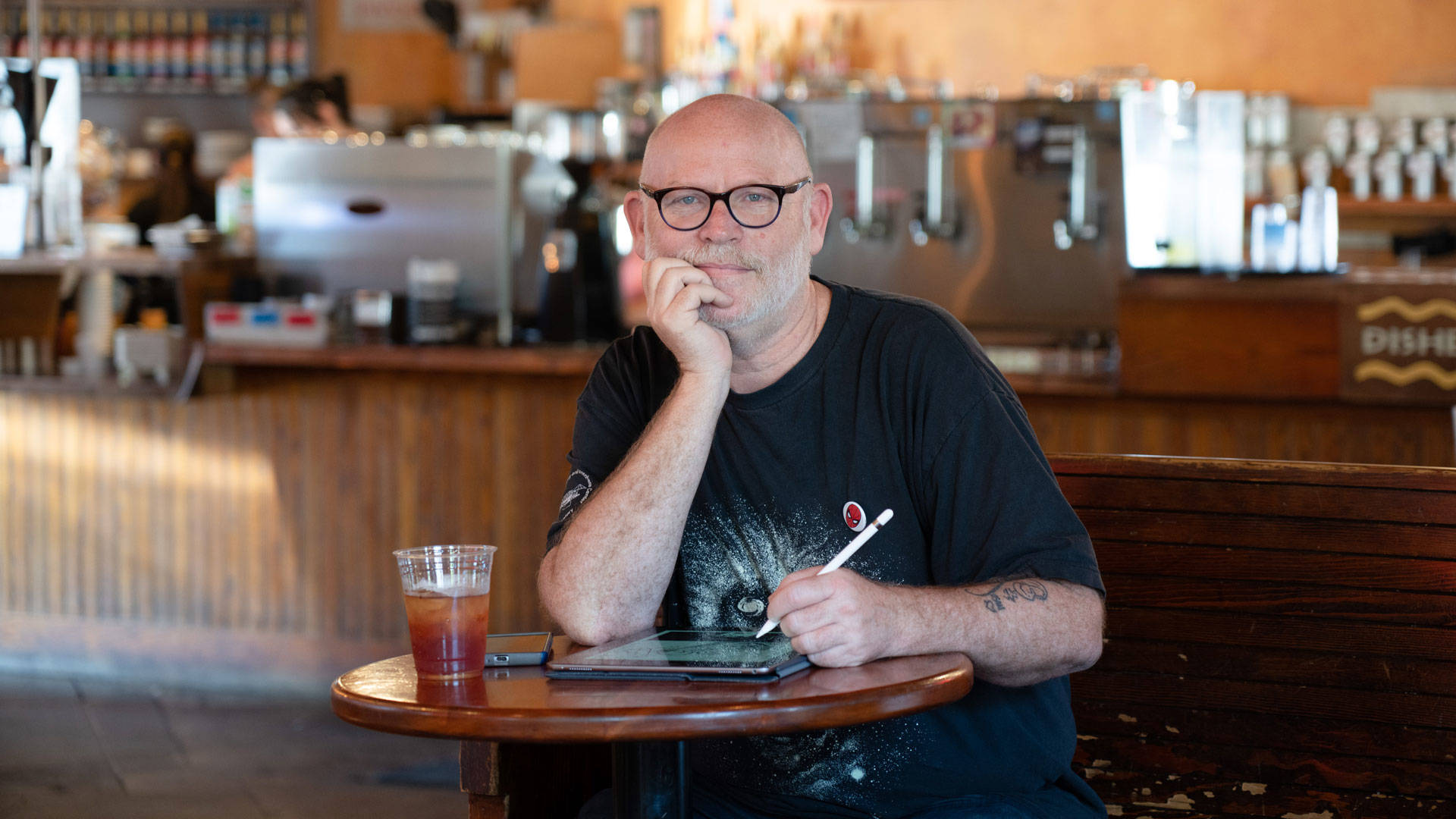I should take off my Spider-Man hoodie, shouldn’t I?
A Cartoonist Balancing Freelance Work and a Day Job on a Shoestring Budget
Tom Beland was walking up to the front door, and he was still second-guessing his wardrobe. He’d been desperately trying to find a place to live in Santa Rosa during a seemingly never-ending housing crisis. He knew he should probably appear professional to the landlord renting the room.
Screw it, Beland thought, as he knocked on the door. I’ll leave the hoodie on.
The door opened. The house, he quickly noticed, was filled with Star Wars memorabilia. The guy renting out the room couldn’t care less about a Spider-Man hoodie, and the room was a steal: large, with its own side entrance, for only $800 a month. Beland assumed it’d be rented to a single mom or someone displaced by eviction. When he got the call that he could have it, “I got emotional, right there in my car,” he recalls.
The thing is, Beland was appearing professional by wearing his hoodie. After all, he’d worked on Spider-Man. For Marvel.
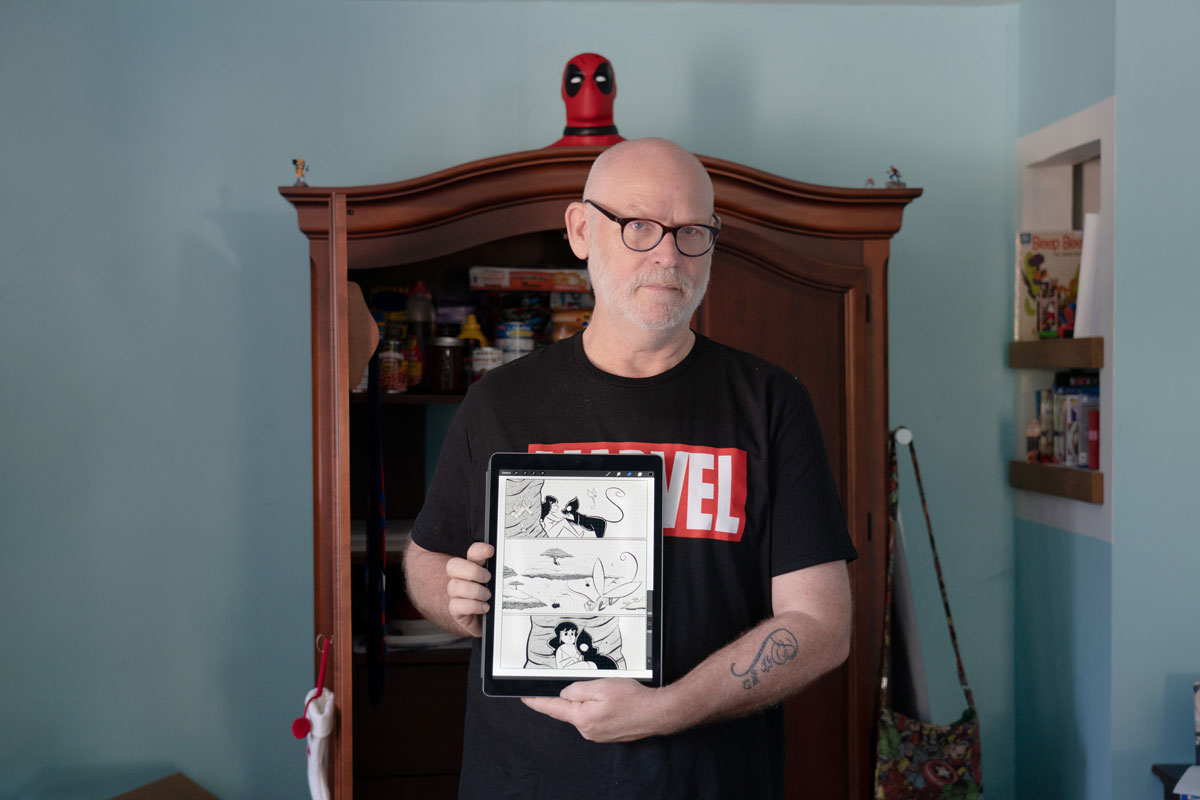
From autobiographical zines to movie options
Beland, 57, is a cartoonist. That means he draws pretty much constantly. During his downtime working at Outer Planes, a Santa Rosa comic book store, he draws. He teaches drawing classes to young students, where he draws, and picks up freelance gigs, for which he draws. Lately he’s been going to steampunk circus-type events, studying the performers, who he draws. Often, he’ll be at a local cafe every day, where he sits, and draws.
Beland lives a city that was home to the world’s most famous cartoonist, Charles Schulz, whose presence lingers throughout Santa Rosa in roadside statues of his Peanuts characters and a museum bearing his name. But the landscape for comics has changed considerably since Schulz’s day.
Along with his $800 rent in the Roseland neighborhood of Santa Rosa, Beland estimates his other major living expenses are internet at $100 a month, and coffee at the cafes where he draws (“that’s my studio rent,” he quips)—$300 a month on average. Working primarily on an iPad now, he doesn’t have to buy many art supplies, and he avoids paying for TV by watching bootleg NBA streams on Reddit. Sometimes, he’ll get free coffee or food from waitresses or cooks who know him as the cartoonist guy who leaves clever drawings of the staff with his bill.
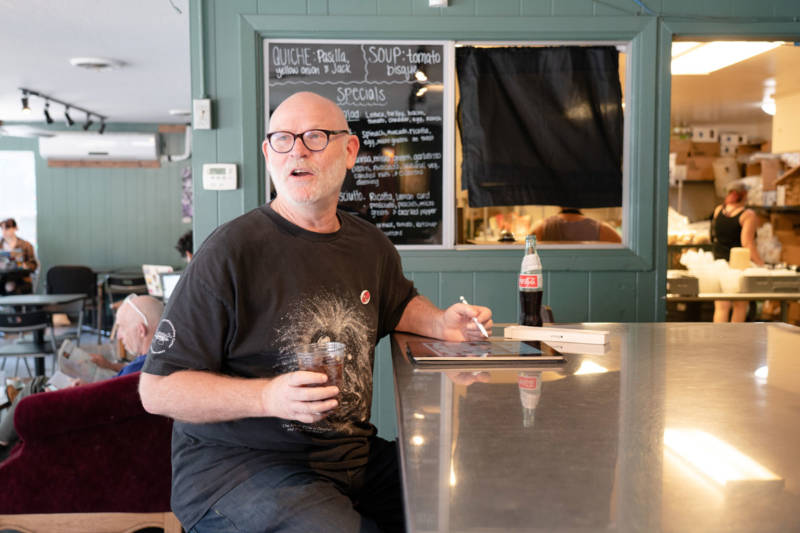
Beland’s day job at the comic book store still provides the most income: about $1,200 a month on average, he says. The money from the lessons he teaches ranges from $100–$250 a month. The rest of his income ebbs and flows from various sources.
Beland has freelanced for Marvel, DC and Bongo; his byline is on comic books of Fantastic Four, Wolverine, Avengers and The Simpsons. When Beland first got asked to write Spider-Man comic books for Marvel, it was a dream come true: his own parents died when he was young, and reading Spider-Man, the orphaned superhero, helped him through the pain.
“It’s one thing to read these characters, but when they’re saying words that came out of your head, it’s crazy,” he says. “I never thought I could love Spider-Man more than when I got to write Spider-Man.”
For his most recent Spider-Man work in 2009, Beland got $170 per page—half for coming up with the story idea, or “plotting,” and half for writing. (Under his Spider-Man deal, he gets royalties if the comics go to paperback. For The Simpsons, he was paid $200 a page, but with no royalty option.)
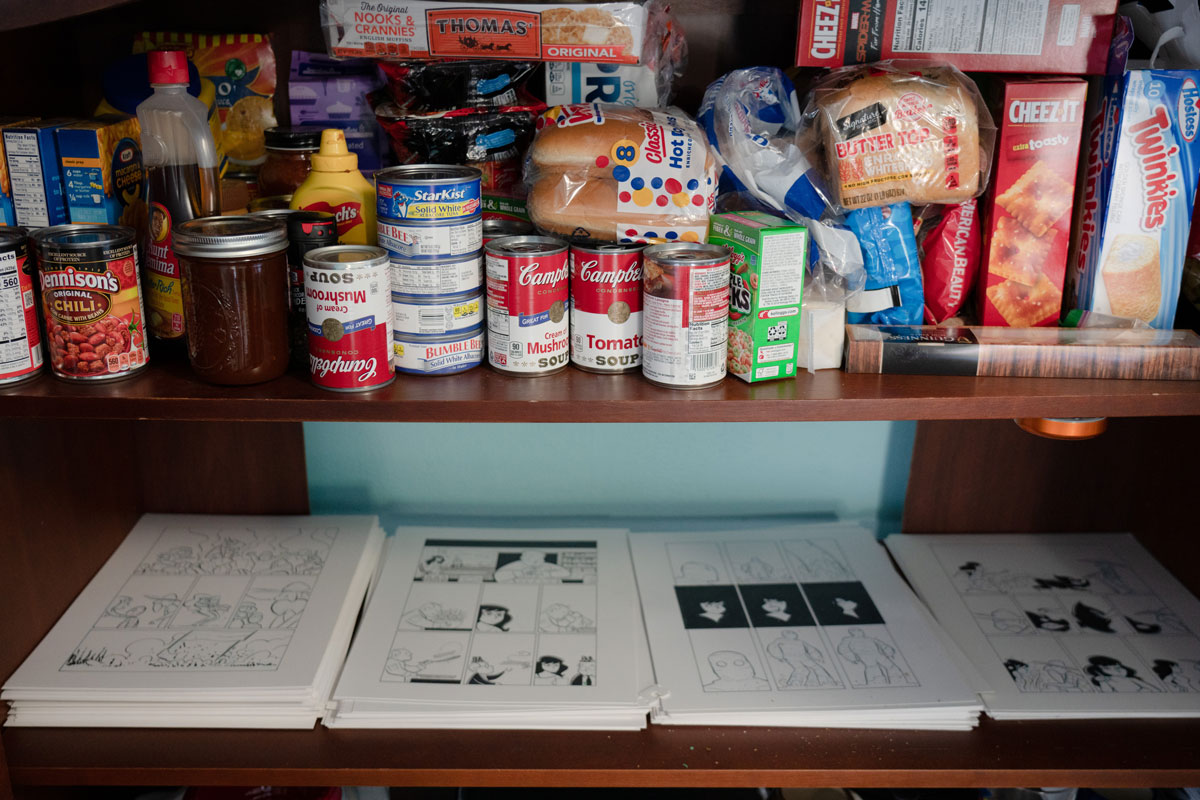
As for Beland’s own books, his first was True Story Swear to God, which started as a comic strip in his hometown newspaper in Napa, the Napa Valley Register, where he was on staff for 17 years. Initially photocopying the autobiographical comics in zine form with a cover price of $2.25 each, they were then anthologized in a book that garnered six nominations at the Eisner Awards, the highest honor in cartooning. The publishing rights now belong to Image Comics, which has kept it in print, although Beland has yet to recoup royalties from it.
Beland’s latest book, Chicacabra, also has yet to get out of the red. But it landed in the hands of pop star Selena Gomez, who loved the story so much she optioned it for a movie. An option doesn’t necessarily mean the film will get made; only that the one paying for the option has dibs on making it. And the pay can be good. Beland’s first option check for Chicacabra was for $5,000. A second check came within the year, again for $5,000. He’s expecting a $10,000 check soon for another option renewal.
Chicacabra follows the adventures of a Puerto Rican high school student, Isabel Sanchez, who after family tragedy discovers a mysterious, literal demon living inside of her body. “I made three demands,” Beland says of the option deal. “That she stay Puerto Rican, if possible, that I want an all-Latino crew, and that I want women on the writing staff. And I got all three.”
For Beland—who, like Gomez, openly wrestles with depression—the checks are an unexpected bonus to something he wrote five years ago. Like writing for Spider-Man, though, it’s more than the money.
“I can see why Selena grabbed that character,” Beland says. “She’s dark, she’s broken, she’s shattered.”

An unexpected windfall and a viral hit
A couple years ago, Beland himself was broken and shattered. On his way to his job at the comic book store, he was hit by a car on his scooter. He broke two ribs and shattered his elbow. He nearly settled for $5,000 when a former editor convinced him to talk to a lawyer.
“It was a year and a half of walking two miles from home to the comic shop,” Beland says. “I couldn’t afford bus fare every day. Food was minimum of bologna sandwiches every day.” (He still keeps a modest pantry—canned soup, white bread, Twinkies—inside an armoire in his room.)
The other driver’s insurance company eventually paid $75,000. After the lawyers took their cut, and Beland bought a new car, a comfortable pad of about $20,000 remained in the bank. Having no other savings or retirement investments, he’s tried not to touch it.
The iPad, something he once swore he’d never use, is an exception. It cost about $1,000, the special stylus another $100. For Beland, it felt wrong, spending so much money. “I don’t buy things like that. I’d been poor for four years,” he says. “I felt guilty when I bought it.”
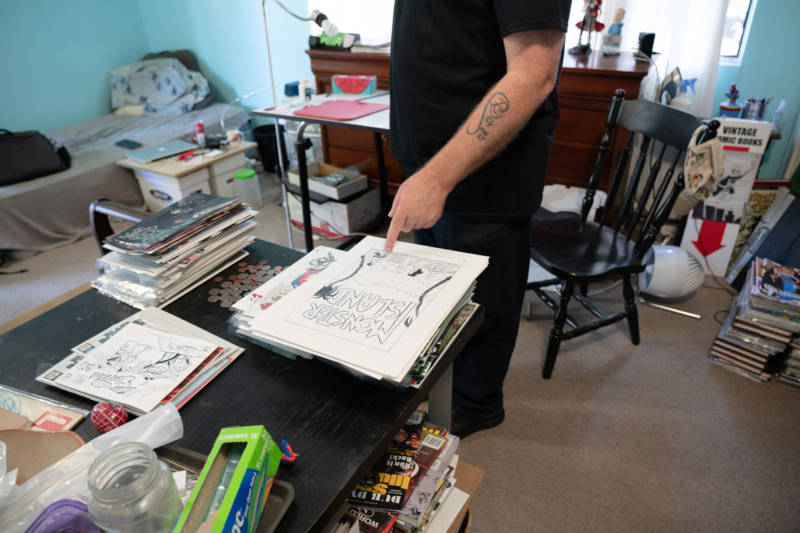
But soon, he was drawing on it nonstop (“I was like Wayne Gretzky the first time he put skates on,” he jokes), and the digital nature of the iPad has allowed him to sell portraits at circus and burlesque shows quickly and cheaply, for $15–$40 each.
Some of Beland’s work doesn’t pay at all. Recently he contributed a two-page story sharply critical of Trump to Puerto Rico Strong, which won an Eisner Award for Best Anthology. The proceeds went to hurricane relief on the island, where Beland lived and called home for 20 years.
But Beland’s most-viewed drawing was one he did in about 15 minutes. In 2018, he’d just seen Black Panther at the movie theater, where he saw some African American children in the lobby pointing at the movie poster, saying “That’s me.” He sketched the scene, posted it on Facebook, and it quickly went viral. After Michael B. Jordan, one of the film’s stars, reposted it, Marvel got in touch asking to use it as a special variant cover for the Black Panther comic book.
Marvel paid him $650 for the sketch. But again, it was about more than the money. Beland was flown around the country for signings, and “I got hugged by a lot of people,” he says. “There were some real emotional moments.”
For the time being, Beland wants to stay in the Bay Area, despite the high cost of living. His brother lives here, “and he’s everything to me,” he says.
And having been in the business for over 30 years, he has some advice for up-and-coming cartoonists.
“You better be ready to grind,” he says. “If you’re going to be a pro baseball player, you’re not going from high school to the Yankees. You’re on a bus. If you’re doing comedy, you’re in a car, you’re going to go to some hotel that’s horrendous, and you maybe get 25 bucks.”
“But,” Beland continues, “it gets you to that gig that’s really interesting. And it gives you the jones to go back and do that next thing. That’s what I’m always looking for. The next thing.”
